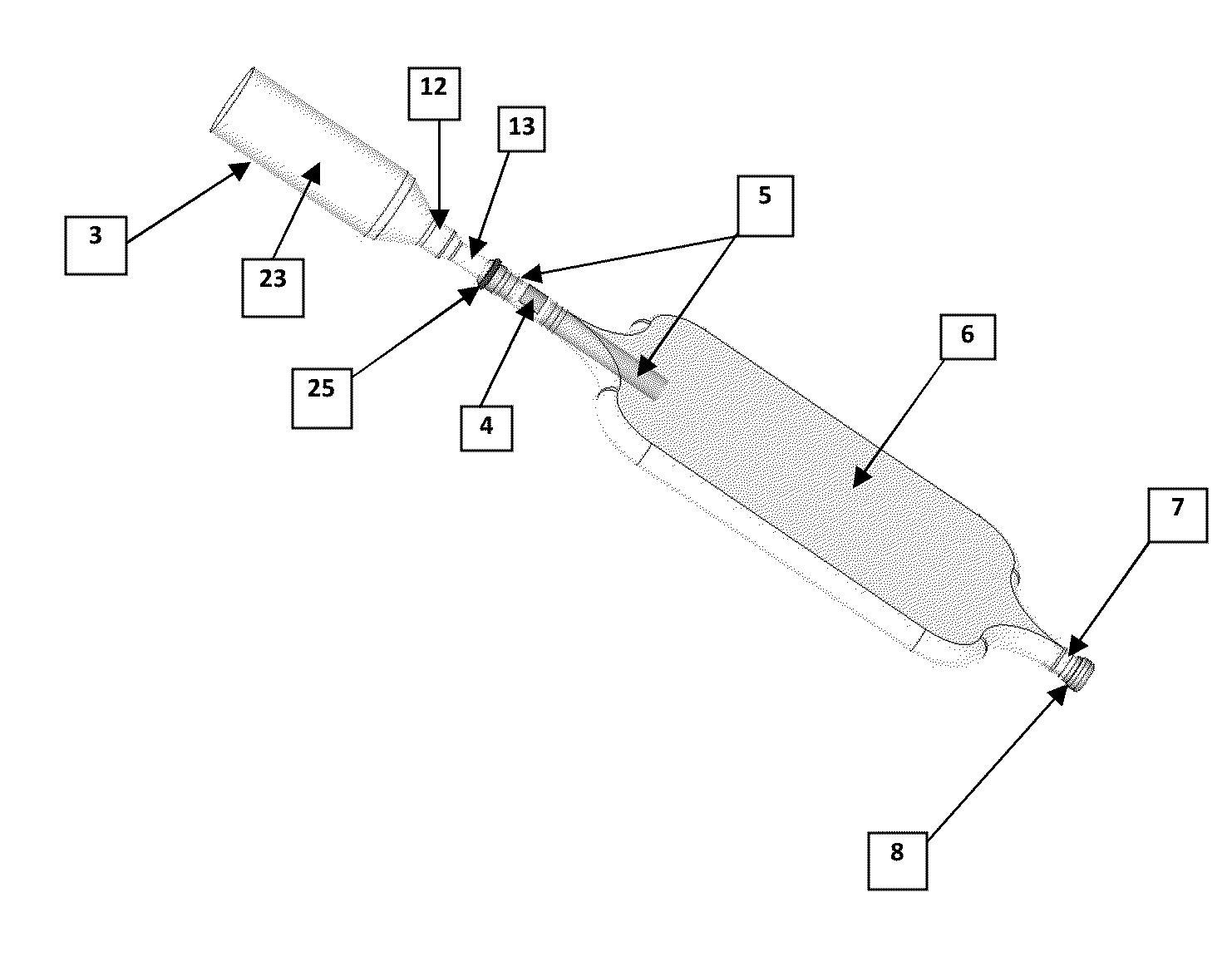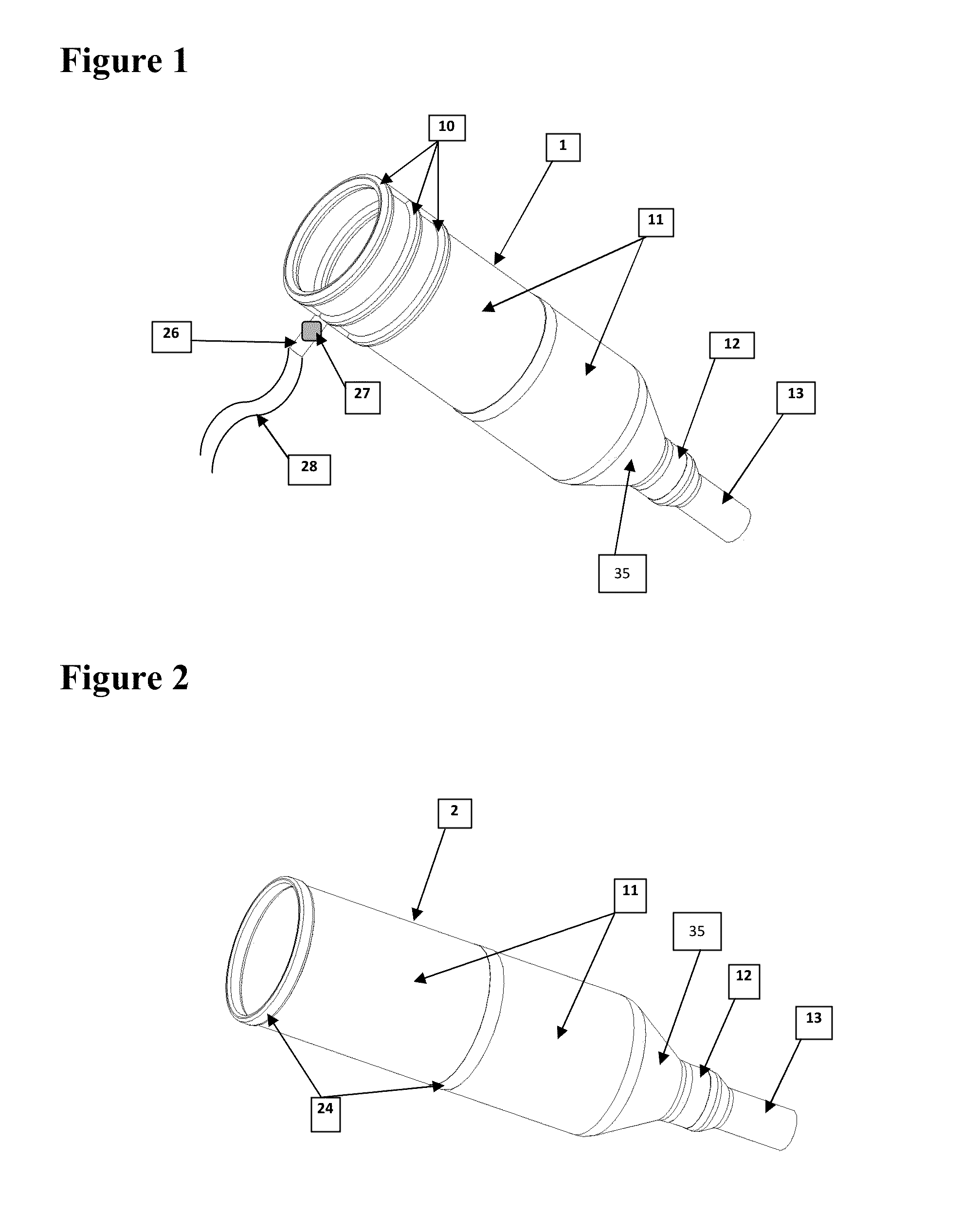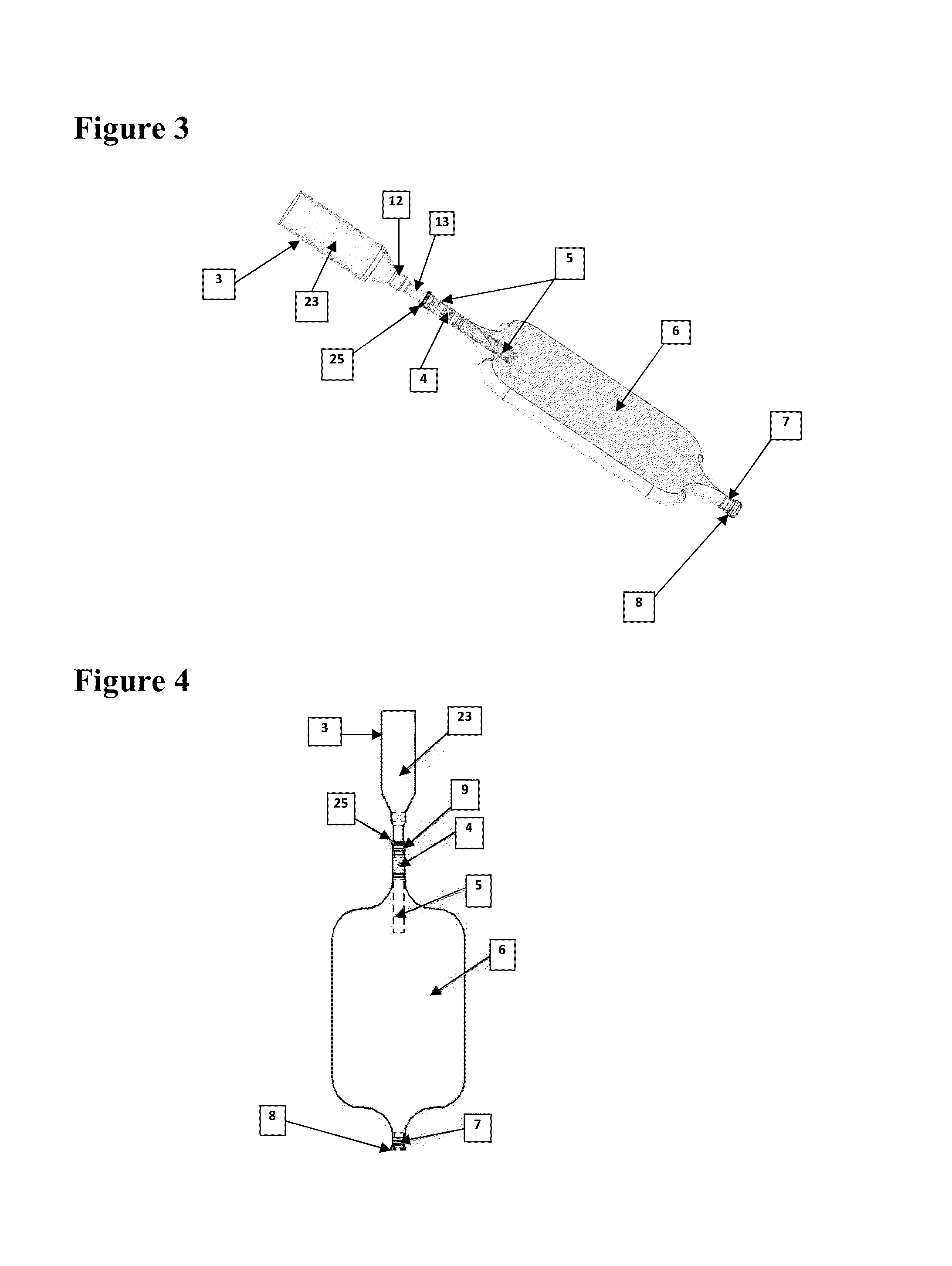Hydro-block air vent condom catheter and method of use
a technology of air vent and catheter, which is applied in the field of hydroblock air vent condom catheter and method of use, to achieve the effects of reducing skin ulcers, maceration and uti, and superior in both its capacity to stay on the user and the amount of pressur
- Summary
- Abstract
- Description
- Claims
- Application Information
AI Technical Summary
Benefits of technology
Problems solved by technology
Method used
Image
Examples
Embodiment Construction
Preferred Embodiments
[0048]With reference now to the drawings, and in particular to FIGS. 1-8 thereof, are depicted four embodiments of a new and novel condom catheter utilizing hydro-block technology.
[0049]FIG. 1 depicts the Inflatable Ring embodiment of the Hydro-Block Air Vent Condom Catheter (1) which has a plurality of Inflatable Rings (10) disposed around the device to aid in maintaining the device securely sealed on a user's penis wherein the Hydro-Block Air Vent Condom Catheter (1) is comprised of Hydro-Block Air Vent (11).
[0050]FIG. 2 depicts the Adhesive Ring embodiment of the Hydro-Block Air Vent Condom Catheter (2) which has a plurality of Adhesive Rings (24) disposed around the device to aid in maintaining the device securely sealed on a user's penis wherein the Hydro-Block Air Vent Condom Catheter (1) is comprised of Hydro-Block Air Vent (11).
[0051]FIGS. 3 and 4 depict the Storage Bag Venting embodiment of the Hydro-Block Air Vent Condom Catheter (3) which vents air fo...
PUM
 Login to View More
Login to View More Abstract
Description
Claims
Application Information
 Login to View More
Login to View More - R&D
- Intellectual Property
- Life Sciences
- Materials
- Tech Scout
- Unparalleled Data Quality
- Higher Quality Content
- 60% Fewer Hallucinations
Browse by: Latest US Patents, China's latest patents, Technical Efficacy Thesaurus, Application Domain, Technology Topic, Popular Technical Reports.
© 2025 PatSnap. All rights reserved.Legal|Privacy policy|Modern Slavery Act Transparency Statement|Sitemap|About US| Contact US: help@patsnap.com



